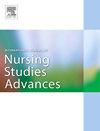Analysis of Risk Factors and Prediction Model Construction for Poor Healing of Perineal Wounds after Vaginal Delivery: A Retrospective Case-Control Study
IF 3.1
Q1 NURSING
International Journal of Nursing Studies Advances
Pub Date : 2025-04-08
DOI:10.1016/j.ijnsa.2025.100326
引用次数: 0
Abstract
Background
Perineal wounds after vaginal delivery are very common, but the existing evidence for poor healing of perineal wounds is limited. Although some studies have analyzed the risk factors for poor perineal wound healing, there are currently no simple and practical predictive tools available for clinical use.
Objective
To retrospectively analyze the independent risk factors for poor perineal wound healing after vaginal delivery and to establish a risk prediction model for poor perineal wound healing.
Design
A Retrospective Case-Control Study.
Data Source
A total of 167 cases of poor perineal wound healing after vaginal delivery who visited the emergency department from May 2021 to September 2023 in our hospital were selected as the poor perineal wound healing group. The control group was randomly selected by the random number table method at a ratio of 1:2 from those with normal perineal wound healing during the same period.
Methods
Clinical indicators of the two groups were analyzed, and the risk factors for poor perineal wound healing were analyzed using univariate and multivariate Logistic regression analysis, and a risk prediction model was constructed. A nomogram was drawn, and the model was evaluated by discrimination and calibration.
Results
This study ultimately included four independent risk factors to construct the risk prediction model, including primiparity, perineal laceration, perineal laceration combined with laceration, and vaginal hematoma. The model formula was Z = 2.256 + 2.7 × (episiotomy with laceration) + 1.5 × (episiotomy) + 1.321 × (vaginal hematoma) + 0.904 × (primiparity). The area under the ROC curve of the constructed model was 0.757 (95% CI: 0.712-0.803), and the optimal cutoff value was 0.194, at which the model sensitivity was 0.952 and specificity was 0.759.
Conclusions
The risk prediction model for poor perineal wound healing after vaginal delivery can reasonably predict the risk of poor incision healing, providing a basis for obstetric medical staff to take preventive management measures for high-risk groups before the discharge of parturient women, thereby reducing the occurrence of poor perineal wound healing.
阴道分娩后会阴伤口愈合不良的危险因素分析及预测模型构建:回顾性病例-对照研究
背景:阴道分娩后的会阴伤口是非常常见的,但现有的证据表明,会阴伤口愈合不良。虽然一些研究分析了会阴伤口愈合不良的危险因素,但目前还没有简单实用的预测工具可供临床使用。目的回顾性分析阴道分娩后会阴创面愈合不良的独立危险因素,建立会阴创面愈合不良的风险预测模型。设计回顾性病例-对照研究。资料来源选取我院2021年5月至2023年9月急诊就诊的167例阴道分娩后会阴创面愈合不良患者作为会阴创面愈合不良组。对照组采用随机数字表法,按1:2的比例从同期会阴创面愈合正常的患者中随机抽取。方法对两组患者的临床指标进行分析,采用单因素和多因素Logistic回归分析会阴创面愈合不良的危险因素,并构建风险预测模型。绘制了模态图,并对模型进行了判别和标定。结果本研究最终纳入初产、会阴撕裂伤、会阴撕裂伤合并撕裂伤、阴道血肿4个独立危险因素构建风险预测模型。模型公式是Z 2.7 = 2.256 + × (外阴切开术撕裂) + 1.5 × (外阴切开术) + 1.321 × (阴道血肿) + 0.904 × (初产)。建立的模型ROC曲线下面积为0.757 (95% CI: 0.712-0.803),最佳截断值为0.194,在该值下,模型敏感性为0.952,特异性为0.759。结论阴道分娩后会阴创面愈合不良风险预测模型可合理预测切口愈合不良风险,为产科医务人员在产妇出院前对高危人群采取预防性管理措施提供依据,从而减少会阴创面愈合不良的发生。
本文章由计算机程序翻译,如有差异,请以英文原文为准。
求助全文
约1分钟内获得全文
求助全文
来源期刊

International Journal of Nursing Studies Advances
Nursing-General Nursing
CiteScore
5.80
自引率
0.00%
发文量
45
审稿时长
81 days
 求助内容:
求助内容: 应助结果提醒方式:
应助结果提醒方式:


